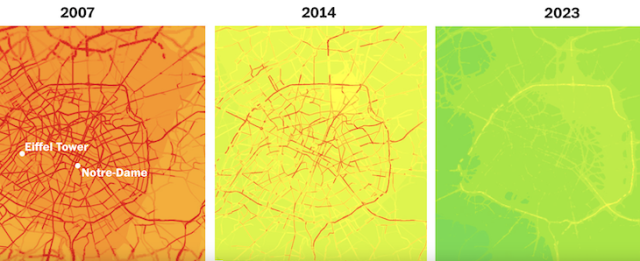Clear the traffic, clear the air

Could Australian inner-city neighbourhoods consider banning cars in the interests of breathing clean air? It has taken 20 years, but Paris has managed to swap out several major motor vehicle arteries for bike lanes and green spaces, while eliminating 50,000 parking spaces – and it is having a measurable impact.
Airparif, an independent group that tracks air quality for France’s capital region, announced earlier this year that levels of fine particulate matter (PM 2.5) have more than halved (55 per cent) since 2005, while nitrogen dioxide levels have fallen 50 per cent. It attributed this to ‘regulations and public policies’, including steps to limit traffic and ban the most polluting vehicles.
Changes over the years have included increased spaces for rental bicycles and higher parking fees for SUVs, forcing drivers to pay three times more than they would for smaller cars. The city has also turned banks of the Seine from a busy artery into a pedestrian zone and banned most car traffic from the shopping boulevard of Rue de Rivoli.
The changes have been so effective, in fact, that in March this year Parisians voted in a referendum to turn a further 500 streets over to pedestrians, plants and trees.